The Soviet War Memorial of Schönholzer Heide.
With the remains of 13,200 Red Army soldiers who died in the Battle of Berlin in April and May 1945, this is the largest Soviet war cemetery outside Russia. And the most emotionally moving.
In the 19th century, the 'Schönholzer Heide' in the north of Berlin was a popular recreational area. Visitors flocked to this vast expanse of green, dotted with old, imposing trees, to escape the hustle and bustle of the city. During the Cold War, however, the area took on a very different character. Bordering the Berlin Wall on its eastern side, Schönholzer Heide found itself under close surveillance, its idyllic charm overshadowed by the tensions of the divided city.
With the fall of the Berlin Wall and the reunification of Germany, Schönholzer Heide has returned to its origins as a tranquil urban oasis. Today, the vast park once again attracts locals and tourists alike to its shady paths and green fields, providing a welcome space for relaxation and recreation during the spring and summer months. A decrepit World War II bunker and, nearby, the crumbling remains of a former labour camp evoke the chilling memory of the Nazi regime's exploitation of forced labourers and prisoners of war.
At the far end of the park, the Soviet War Memorial serves as the final destination for many who walk through Schönholzer Heide. On 8 and 9 May each year, visitors pay their respects and lay flowers in honour of the Soviet soldiers buried on its grounds.
Built between May 1947 and November 1949, this is the last of the Soviet military cemeteries in Berlin. When construction began, the Tiergarten Memorial was already in place and the Treptower Park Memorial was well underway.
The memorial covers an area of 30,000 square metres and contains the remains of 13,200 Red Army soldiers who died during the Battle of Berlin in April and May 1945. Remarkably, one third of these soldiers were Ukrainian. If you know the surnames of these countries, you will easily recognise them when you read the names on the 100 bronze plaques that surround the memorial. They list the names, ranks and dates of birth of the identified fallen soldiers.
The only large sculpture in Schönholz is not a soldier triumphantly crushing "fascism" or rescuing a child, as the "liberators" from the East often portrayed themselves.
The central piece of the memorial is a statue of Mother Homeland (in German: Mutter Heimat; in Russian Родина-мать Rodina-mat'). This is the most emotionally powerful and symbolically rich of the common motifs of Soviet memorial sculpture. The 8-metre-high bronze statue depicts a grieving woman who, after laying her fallen son to rest under a flag, rises again to hold a victor's wreath at the height of his head.
Mutter Heimat is a common motif in Soviet war memorials, symbolising the immense sacrifices made by the Soviet people and evoking a sense of patriotism and national pride. In more famous memorials, such as those in Volgograd (Stalingrad) and Kyiv, the woman is depicted as a combatant raising a sword to the sky. In Berlin, however, the composition is reminiscent of an Italian Pietà, emphasising human suffering rather than martial glory.
I visit this monument once a year, always at the same time of year, when the days are longer and nature is in bloom. For me, this statue and the surrounding trees, including beautiful willows, immersed in a silence broken only by the birdsong, encapsulate the essence of Berlin at its best.
Behind the statue is a 33.5 metre long syenite obelisk. Soviet obelisks can be found throughout the former GDR, usually in the central square of the village or at the entrance, often in front of the railway station. Inspired by ancient Egyptian obelisks and the obelisk form used in neoclassical architecture in Imperial Russia, the obelisk design draws on a long tradition of monumentality.
Flanking the main axis are eight burial chambers, each containing 1,182 soldiers. Inside the obelisk's Honor Hall, two Soviet colonels are laid to rest.
The memorial's more martial and political themes, featuring quotes from Joseph Stalin and Soviet symbols, are situated on its other side, at the complex's massive portal.
"ENTBLÖSST DAS HAUPT! HIER SIND SOWJETISCHE SOLDATEN, HELDEN DES GROSSEN VATERLANDISCHEN KRIEGES 1941 - 1945 ZUR EWIGEN RUHE GEBETTET. SIE GABEN IHR LEBEN FÜR EURE ZUKUNFT"
"UNCOVER YOUR HEAD! HERE LIE SOVIET SOLDIERS, HEROES OF THE GREAT PATRIOTIC WAR 1941 - 1945 LAID TO ETERNAL REST. THEY GAVE THEIR LIVES FOR YOUR FUTURE"
The symbols of the different branches of the Red Army are paired with bronze reliefs of soldiers in "action". However, all these elements point "outwards" or "away" from the actual cemetery. Essentially, anyone who has traversed the portal has already moved beyond this sphere of "battle" or "war" and entered a space for grievance and reflection.
For your next visit in Berlin, the exact adress of the memorial is: Sowjetisches Ehrenmal Schönholzer Heide, Soviet War Memorial, Germanenstraße 17, 13156 Berlin.




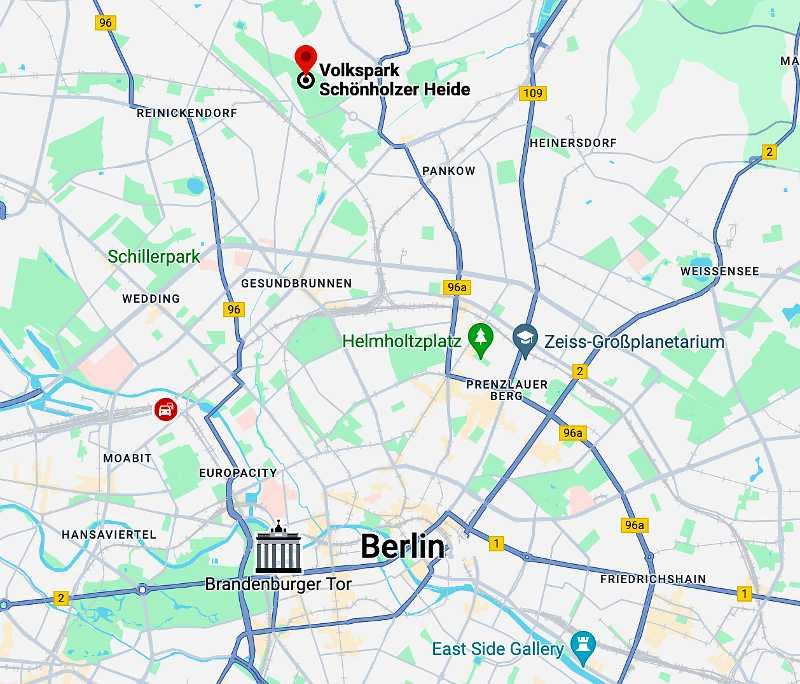
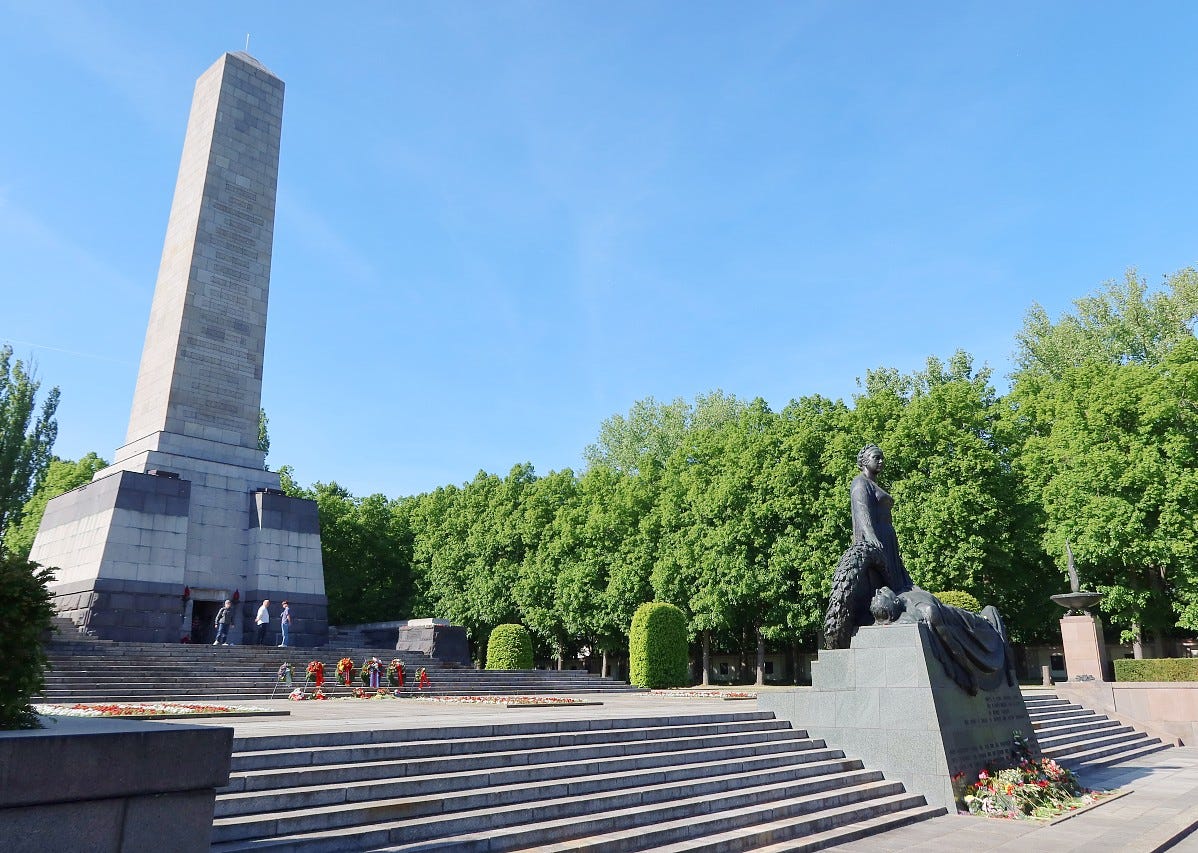

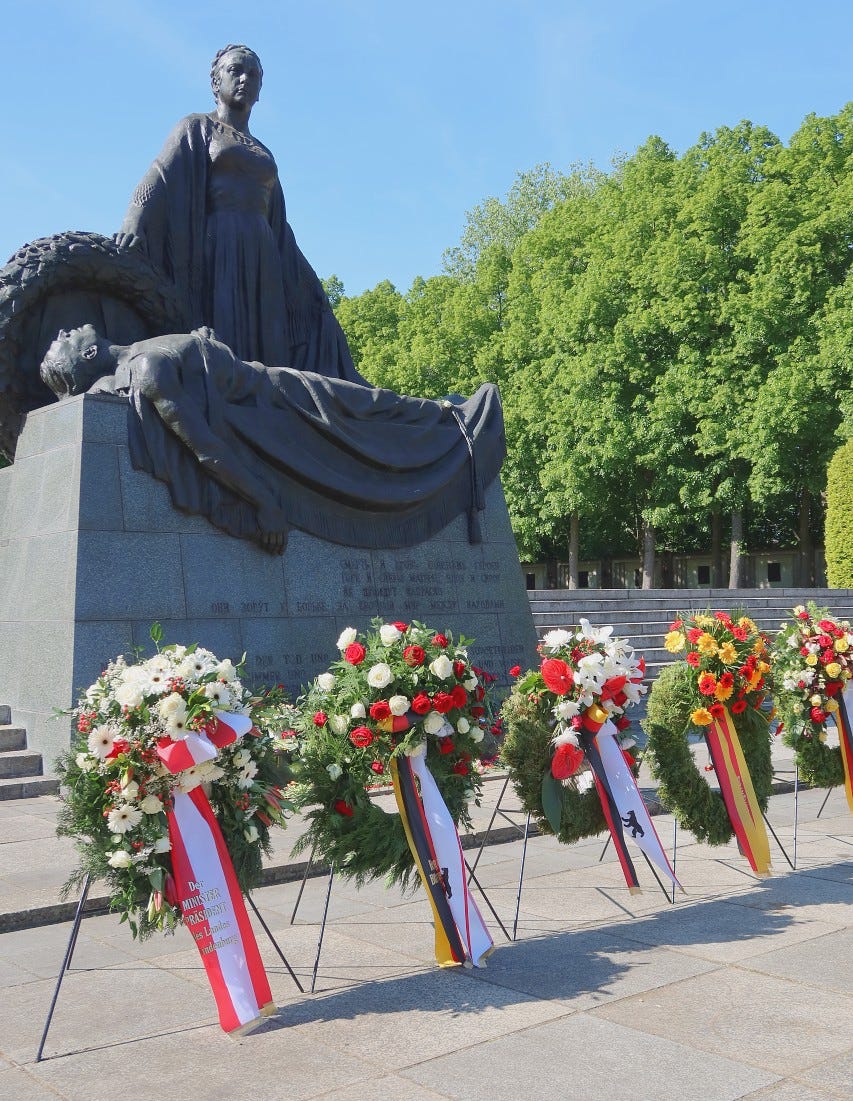

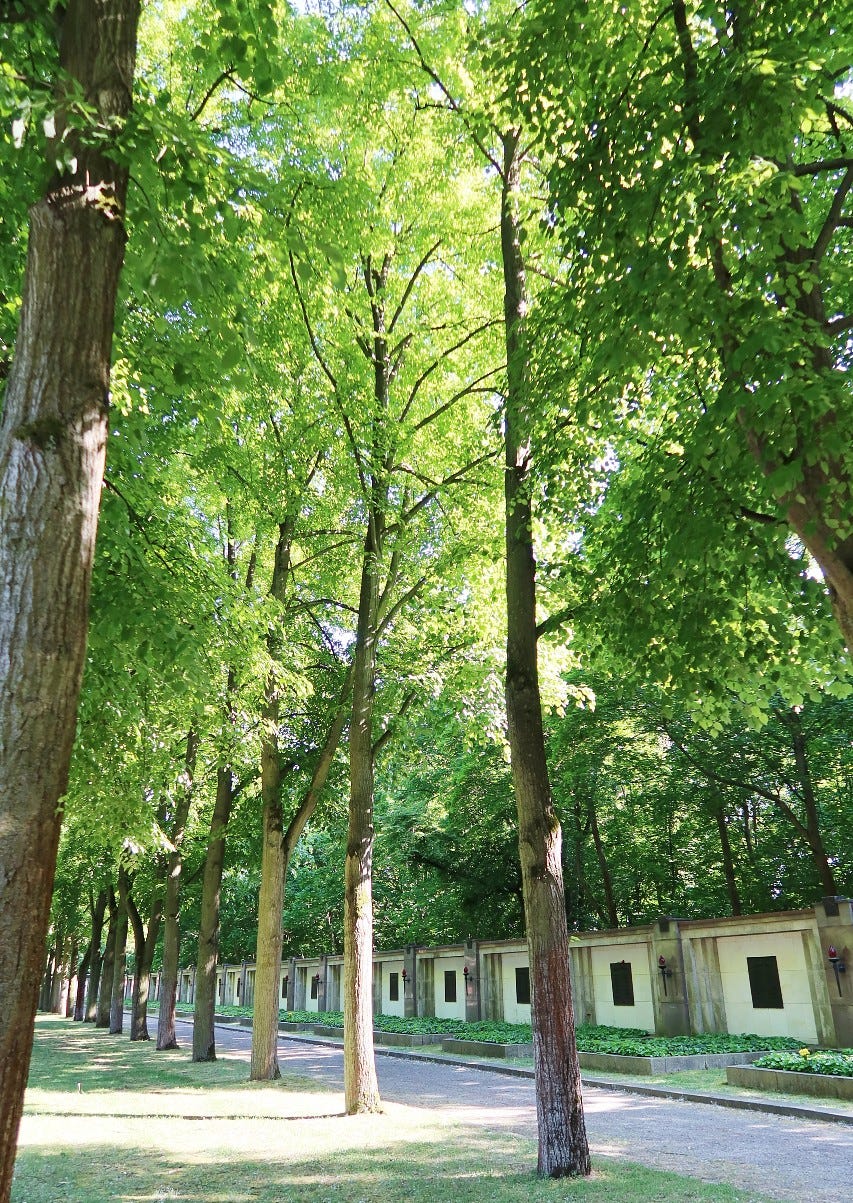
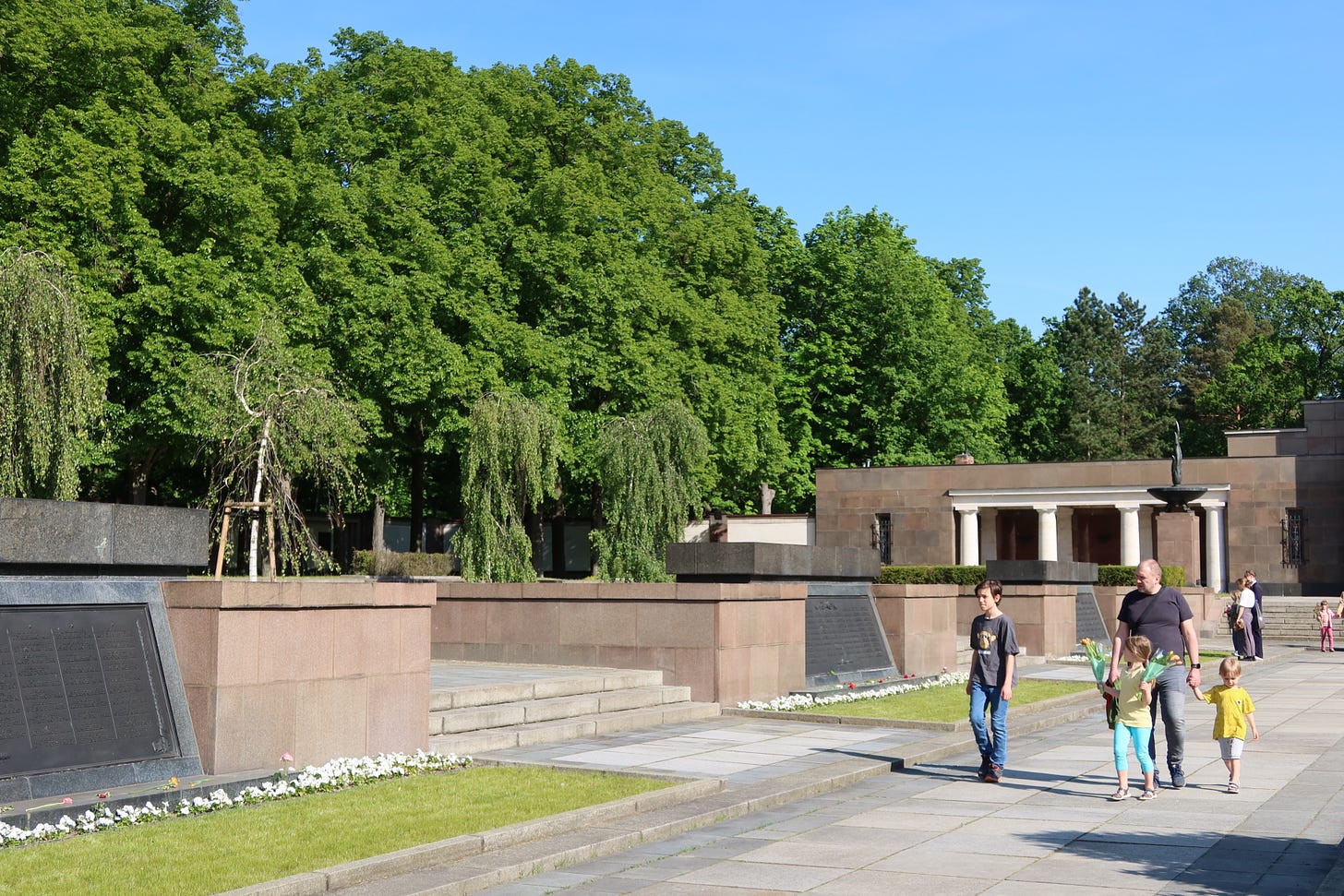

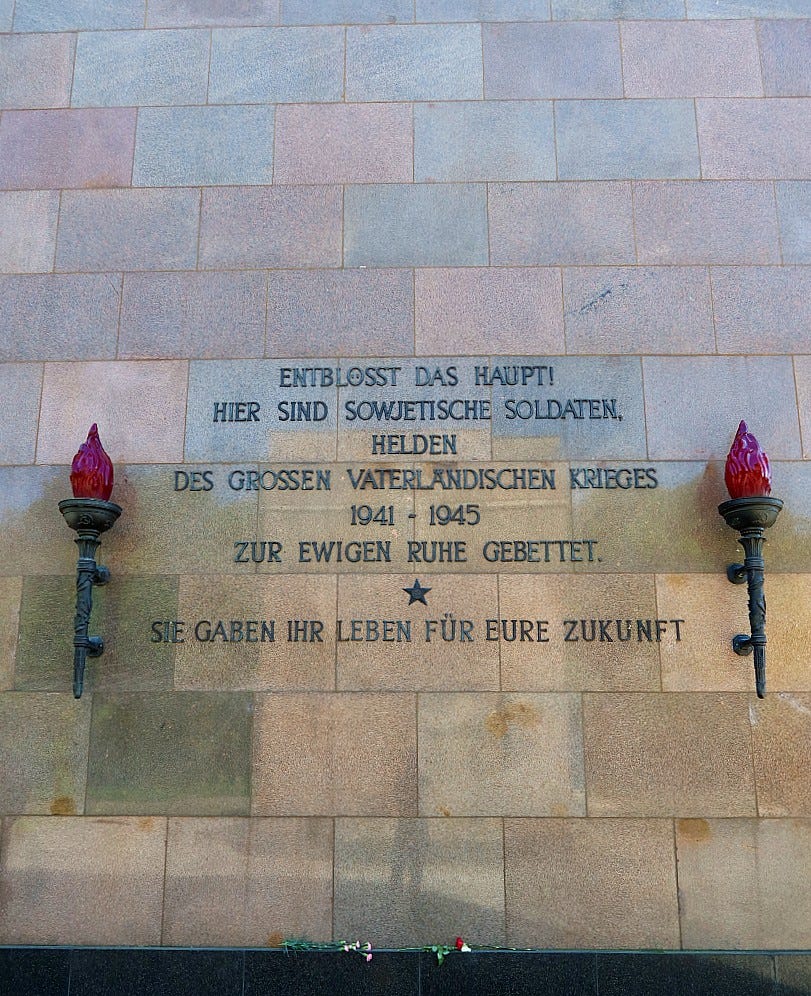
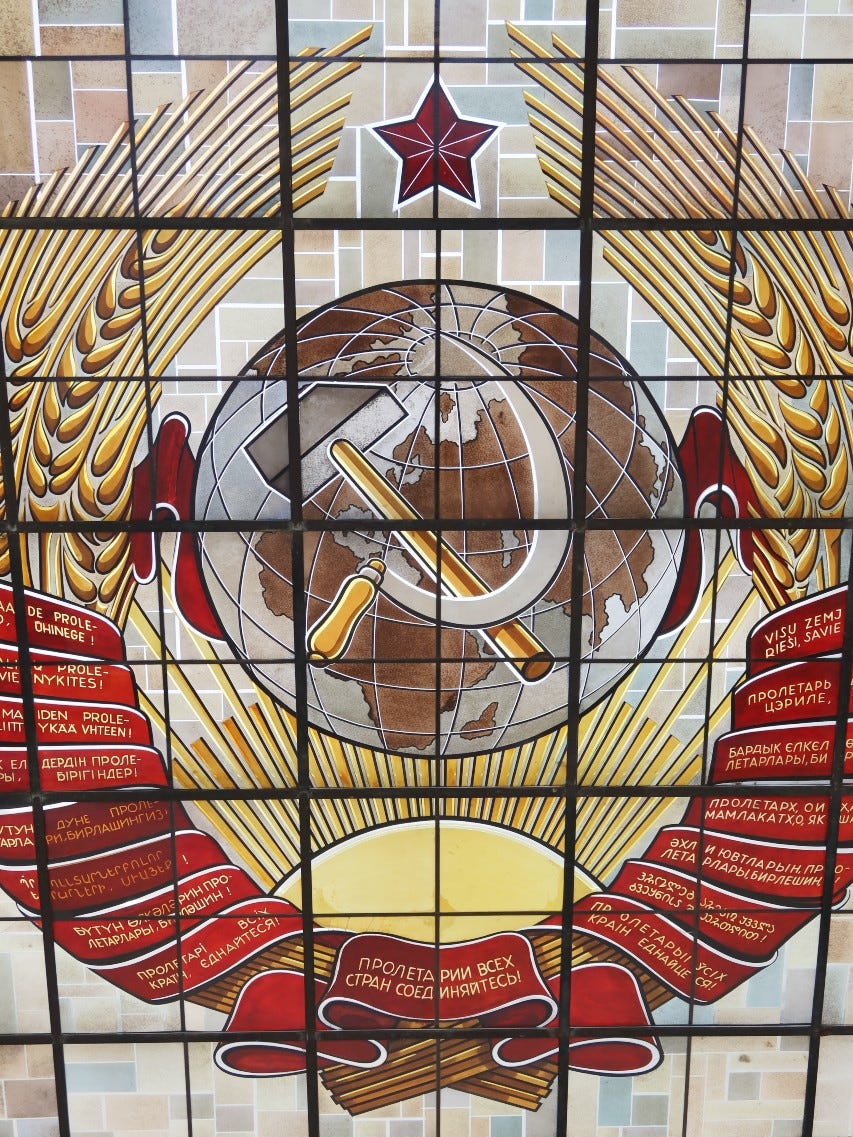


Another very interesting article. Thank you. I also enjoyed your photographs. I visited Schönholzer Heid a few years ago. It really is quite moving, immaculately presented and maintained. Remarkably quiet and peaceful.